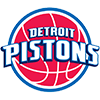If you want to stir a debate among baseball people involved in evaluating prospects, bring up the name Jerry Sands. Since Dodgers drafted Sands in the 25th round in 2008, he has been the subject of differences of opinion and just plain passion. Some are passionate for him, but others feel he has no chance to be a good major league player. Generally, baseball prospect evaluators and scouts feel strongly one way or the other about Sands. Few have no opinion.
With Marcus Thames, Xavier Paul, Jay Gibbons and Tony Gwynn, Jr. patrolling left field for the Dodgers, the team simply wasn't scoring enough runs. The Dodgers continued to look for a solution. Manager Don Mattingly advocated for a solution within the Dodgers' organization.
The result? Sands is now a major league ballplayer. He was recalled from Albuquerque on April 18 while Paul was designated for assignment. Sands will likely play left field for Los Angeles in his initial days with the Dodgers. He went 1-for-3 with an RBI and two strikeouts in his debut. Sands will be given the opportunity to answer his critics with his performance.
Born in Clayton, North Carolina, Sands is a muscular, 6-foot-4, 210-pound right-handed hitting first baseman/outfielder with legitimate power potential. Sands can easily be mistaken for a tight end or tackle on a professional football team. In fact, he played linebacker and tight end for his Smithfield-Selma High School team in Smithfield, North Carolina. Of course, he's even bigger
If you want to stir a debate among baseball people involved in evaluating prospects, bring up the name Jerry Sands. Since Dodgers drafted Sands in the 25th round in 2008, he has been the subject of differences of opinion and just plain passion. Some are passionate for him, but others feel he has no chance to be a good major league player. Generally, baseball prospect evaluators and scouts feel strongly one way or the other about Sands. Few have no opinion.
With Marcus Thames, Xavier Paul, Jay Gibbons and Tony Gwynn, Jr. patrolling left field for the Dodgers, the team simply wasn't scoring enough runs. The Dodgers continued to look for a solution. Manager Don Mattingly advocated for a solution within the Dodgers' organization.
The result? Sands is now a major league ballplayer. He was recalled from Albuquerque on April 18 while Paul was designated for assignment. Sands will likely play left field for Los Angeles in his initial days with the Dodgers. He went 1-for-3 with an RBI and two strikeouts in his debut. Sands will be given the opportunity to answer his critics with his performance.
Born in Clayton, North Carolina, Sands is a muscular, 6-foot-4, 210-pound right-handed hitting first baseman/outfielder with legitimate power potential. Sands can easily be mistaken for a tight end or tackle on a professional football team. In fact, he played linebacker and tight end for his Smithfield-Selma High School team in Smithfield, North Carolina. Of course, he's even bigger since those days.
Sands had friends who attended NCAA Division II Catawba College in Salisbury, North Carolina. Those friends influenced Sands to attend the 1,000-student private school situated between Winston-Salem and Charlotte. Sands played baseball at Catawba from the moment he arrived as a freshman. By the end of his time there, Sands held the Catawba records for most home runs (61), walks (132) and slugging percentage (.752).
Scouts weren't overly impressed with Sands' hitting approach at Catawba, and even though he flashed tremendous power he wasn't viewed as a major prospect during the 2008 draft. In particular, the word about Sands was that his swing was long and undisciplined. He didn't have a good flow of his hips through the ball and he used only his upper body strength to muscle pitches. He was seen as a "one-tool" player - that being power hitting. However, usually when the one tool is power, chances are the player will be drafted and get a good look.
Early in his professional career, Sands showed the same type of mechanical issues he displayed in college. His swing was not polished and he was intent on hitting home runs. In his first year, Sands managed to hit only .205 in 146 at-bats at the Rookie level Gulf Coast League.
Sands began to show improvement in his approach during the 2009 season. In 2009, he played both at Rookie-level Ogden and Low-A Great Lakes in the Midwest League. Sands hit 19 homers in 2009 with an average of .250 at Ogden and .260 at Great Lakes. He showed good improvement in his hitting approach with a shorter, more compact swing. However, because he only had one skill, he still didn't profile as the type of hitter the Dodgers usually target. Like many clubs, the Dodgers want multi-dimensional, multi-tool players.
Sands had an outstanding season in 2010. He began the season back at Great Lakes where he hit .333 with 18 homers and 46 RBI in 243 at-bats covering 69 games. Overall, Sands was .432/.646/1.078. He was promoted to Double-A Chattanooga where he hit .270 with 17 homers and 47 RBI. At Chattanooga, Sands' line was .360/.529/.889. He was beginning to raise some eyebrows.
The Dodgers decided to send Sands to the Arizona Fall League at the end of the 2010 season. He played under the direction of then future and now current Dodgers manager Don Mattingly. The Fall League experience might be the best thing that happened to both Sands and Mattingly. The two worked together and got to know one another. Sands had an outstanding fall right in front of the manager's eyes. It was reported recently that Mattingly is very positive about Sands and Mattingly had begun to lobby for his arrival on the big club. It's the best endorsement a player can receive. Sands entered the major leagues knowing that his manager really wants him on the club.
I got to see a great number of Sands' Fall League at-bats. He hit .299 in 32 at-bats covering 22 games. He hit three homers and drove in 13 runs, while stealing two bases. His OPS was an impressive .902. However, I didn't come away from the Fall League overwhelmed by his performance. I remember being impressed by his size and strength. He could punish a ball if it was in his wheelhouse and he could hit breaking balls, but there weren't many good breaking ball pitchers. He could hit the mediocre fastball pitchers he saw most frequently because there weren't many higher velocity pitchers in the AFL. I remember thinking that Sands held his own but he didn't make me sit up in my seat and take note. In short, while Sands looked good in the Fall League he wasn't really on my prospect radar screen. I wasn't alone. Of all the criticism, it was Sands' slow bat speed that got the greatest amount of attention and criticism. At the end of the AFL he knew the following: He had to get quicker through the ball and he had to use his entire body to generate torque or he'd be at the mercy of high velocity pitchers. His swing had to remain compact to be able to make contact on the barrel of the bat. He had lots to concentrate on after the AFL and he has even more pressure now. He'll be trying to improve his game at the major league level. That's no easy task.
Many scouts who saw Sands play in the Arizona Fall League repeated the issue about Sands having only one tool that plays. He hadn't shown that he could consistently hit for average, even though he hit almost .300 in the Fall League. That sampling was small and it could be dismissed because the pitching was mediocre. He showed no foot speed to speak of, but he has stolen bases at every level. His defense is suspect and he is considered a liability in the outfield. However, he played games in both left field and right field without causing harm to his team, and his arm is average. Sands strikes out a lot, but in the eyes of many evaluators, while he doesn't have major league skills other than power, he certainly has enough going for him to get that extra look. Given his strong 2010 minor league season and a repeat of the power during the AFL, Sands was viewed as a prospect worth watching. He just wasn't viewed as a player that would have an immediate impact on the Dodgers' big league club. The team's lack of power hitters changed that line of thinking. That and the presence of Mattingly vouching for Sands when his team showed so little early season pop.
Sands opened the season with Triple-A Albuquerque. In his first 10 games, Sands hit five home runs, drove in 17 and had people in baseball raving about his power and potential. Some scouts were still skeptical, but others said he had improved enough to be given a shot. Having shown the power at every level in his minor league career, the Dodgers decided they couldn't wait much longer to inject more offense to the lineup. Sands would be their man.
It is basically assumed that Sands will be playing left field for Los Angeles. That should be interesting. I'm reminded that the defensively challenged Juan Pierre staffed left for the Dodgers as recently as two seasons ago. Can Sands be worse? We don't know yet. The saving grace is that Matt Kemp is fast enough and agile enough to cover left for Sands if needed. Remember, Sands is not being called to play defense. He's being called to the Dodgers to hit home runs. That's something the Dodgers didn't get yet from Paul, Thames or Gibbons.
In the end, The Dodgers realized the need for offense. They also realized that bringing up their own players is far less expensive than the option of trading for a power hitter from another club. If such a player were available, the price in trading chips as well as salary would be prohibitive. For now, the Dodgers have outfielders in Sands and Trayvon Robinson available to assist with generating offense and scoring runs. If Robinson, a scrappy and speedy center fielder can come off the bench and bunt his way on, walk or drop a quick single on the opposition he could steal a base and get in scoring position. The bigger hitters in the lineup like Sands, Kemp and Andre Ethier might be able to bring home the run. That sounds like a plan.
Sands is in the best organization possible for his skill set at this particular time in his career. He's with a team that needs his power and one that can't afford a higher priced player when they don't have enough run producers. The time is now for Sands, and it's clearly possible that Sands can take over the first-base position of James Loney at some point in the near future. Loney is not a power hitter playing a power hitter's position, so Sands offers some long-term flexibility to move to first base if Loney's struggles continue.
Be assured there will be critics that are poised to say, "See, I told you so. He can't hit. Good pitching gets him out."" I'm not ready to say that. I want to see what he can do with his raw power and his desire to succeed. I just hope he doesn't become a major league to minor league yo-yo. I hope he doesn't come to Los Angeles to sit on the bench, and I hope he plays. If he scuffles, I hope they are patient with him. If he succeeds initially, I hope it's a lasting success. My mind is open about Sands. He has awesome power. He's a big, big man that can put a charge in a ball. And perhaps he can help put wins in the standings.
Don't expect too much. Remember, people paid to evaluate players are very divided about Sands. Many like him, many don't. Now he has a chance to prove half of them right.
Follow me on Twitter @BerniePleskoff
Bernie Pleskoff is a former pro scout for the Houston Astros and Seattle Mariners. He is a graduate of the Major League Scouting Bureau's Scout School in Phoenix.


























